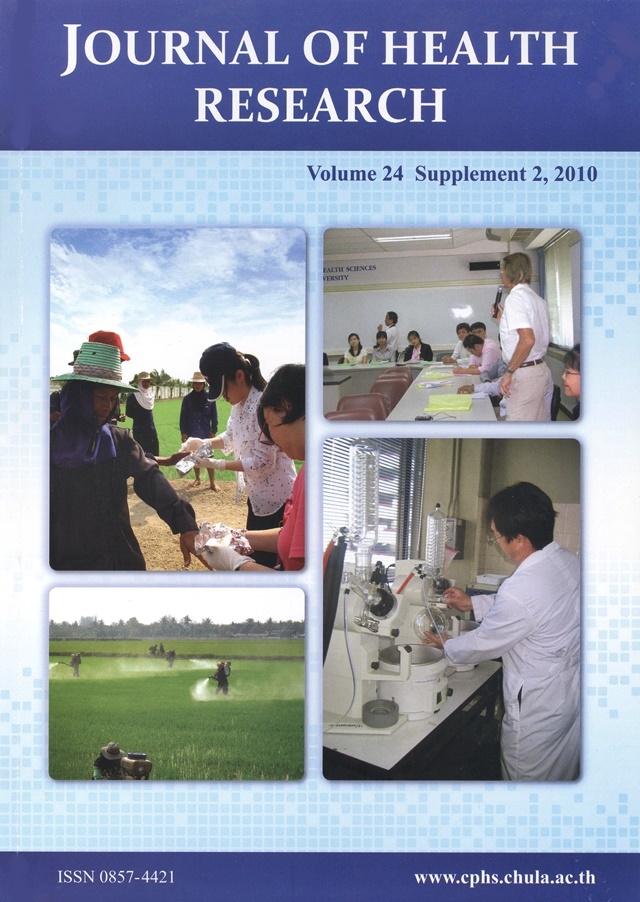Risk Assessment of Chlorpynfos (Organophosphate Pesticide) Associated with Dermal Exposure in Chilli-Growing Farmers at Ubon Rachathani Province, Thailand
Keywords:
Chlorpynfos, Risk assessment, Dermal exposure, Chilli-growing farmersAbstract
Risk assessment of Chlorpyrifos (Organophosphate Pesticide) associated with dermal exposure in chilli-growing farmers was studied during growing season from December 2009 to January 2010 at Hua-ruea sub-district, Muang district, Ubon Ratchathani province, Thailand. Chlorpyrifos residue on chilli-growing farmers’ hands after spraying were collected using hand-wiping technique from 35 farmers (26 men and 9 women) by using simple random sampling technique from all chilli-growing farmers in this area. The results showed that an age range of the participants was 40-50 years old. The average weight (mean±SD) was 56.3 k11.1 Kg. Hand surface areas of male and female were 0.088 m2 and 0.075 m2, respectively. The mean concentration (±SD) of chlorpyrifos analyzed by using gas chromatograph with a selective detector, flame photometric detector (FPD) was 6.95 k18.24 mg/kg/two hands (0.01 - 98.59 mg/kg/two hands). To evaluate health risk of the chilli-growing farmers in this community, an Average Daily Dose (ADD) was calculated using reasonable maximum exposure (RME) at 95th percentile of chlorpyrifos concentration in order to concern health awareness and prevention. The ADD of farmers was 2.5 1 x 10-9 mg/kg/day and the ADD of male farmers (2.57 x 10-9 mg/kg/day) was higher than female farmers (2.41 x 10-9 mg/kg/day). Using hazard quotient (HQ) for risk characterization, it indicated that the HQ of farmers was lower than the acceptable level 1.0 (HQ = 1.67 x 10-6). Both of the HQ for male and female farmers were lower than the acceptable level, 1.71 x 10-6 and 1.61 x 10-6, respectively. In conclusion, the chilli-growing farmers were not at risk with non-carcinogenic effects from dermal exposure. This study suggests that other exposure routes e.g. inhalation and oral should be considered and evaluated because the farmers had mentioned on acute and repeated or prolonged effects of organophosphates after their application.Downloads
Published
2018-11-28
How to Cite
Taneepanichskul, N., Siriwong, W., Siripattanakul, S., Pongpanich, S., & Robson, M. G. (2018). Risk Assessment of Chlorpynfos (Organophosphate Pesticide) Associated with Dermal Exposure in Chilli-Growing Farmers at Ubon Rachathani Province, Thailand. Journal of Health Research, 24(Suppl. 2), 149–156. Retrieved from https://he01.tci-thaijo.org/index.php/jhealthres/article/view/157724
Issue
Section
ORIGINAL RESEARCH ARTICLE






